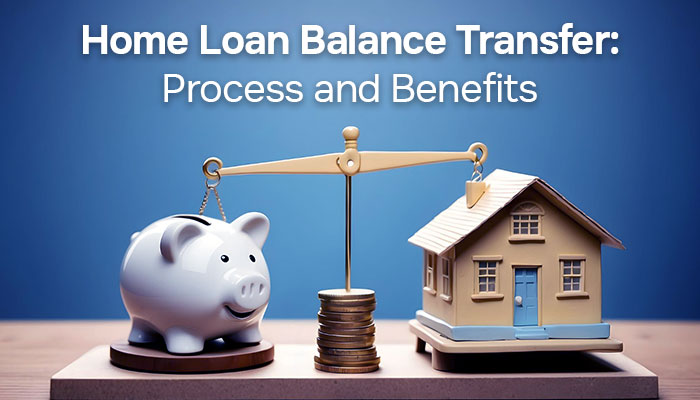80:20 Home Loan Rule You Should Know Before Buying a House

Ever dreamt of owning your haven, but the hefty down payment feels like a brick wall blocking your path? Hold on, future homeowner! IIFL Home Loans unveils a secret weapon — the 80:20 home buying rule. Imagine slashing your upfront costs and accelerating your journey to homeownership. Sounds too good to be true? It's not! Get ready to unlock the door to affordability and navigate the exciting world of real estate with this game-changing rule. The article lists important tips for first-time home buyers. Let's dive into it.
Breaking Down the 80:20 Rule
Picture this: the 80:20 rule lets you finance a whopping 80% of your dream home's value through a home loan, leaving you with just 20% to manage as a down payment. Think of it as a magic trick, shrinking that intimidating down payment and leaving you with more cash in your pocket. Compared to traditional 25% or 30% down payments, the 80:20 rule feels like a breath of fresh air, especially for first-time buyers.
This opens doors to endless possibilities! Access higher loan amounts, snag that perfect property you've been eyeing and move into your dream home sooner than you ever imagined. Sounds like a win-win, doesn't it?
Leveraging the Advantages of the 80:20 Rule
The house buying rule lowers upfront costs and opens doors for first-time buyers with limited savings, providing increased purchasing power and a faster move-in timeline.
-
Lower upfront cost: Breathe easy, first-time buyers! This rule makes homeownership a feasible dream, even without mountains of savings.
-
Increased purchasing power: Say goodbye to limitations! Access higher loan amounts and explore a wider range of properties that fit your aspirations.
-
Faster move-in timeline: Who wants to wait years to own their haven? The 80:20 rule accelerates your journey, bringing your dream home closer than ever.
-
Flexibility with remaining funds: Forget scrambling for every penny! With a smaller down payment, you have more control over your finances, allowing you to prioritize renovations, furniture, or other important expenses.
Weighing the considerations before diving in
While the 80:20 rule offers lower upfront costs, a real estate tip for buyers is that borrowing a larger sum results in higher total interest paid over the loan tenure.
-
Higher loan amount, higher interest: Remember, borrowing more means slightly higher total interest paid over the loan tenure.
-
Shorter loan eligibility: Some lenders might offer shorter loan terms for higher loan-to-value (LTV) ratios like 80%.
-
Private Mortgage Insurance (PMI): Be prepared for PMI, an additional insurance premium, until your LTV falls below 80%.
-
Managing long-term debt: Responsible financial planning is key! Ensure you can comfortably manage the extended loan repayments before diving in.
Making the Right Choice: Is the 80:20 Rule for You?
Even though the 80:20 rule is the house buying rule of thumb, choosing the right down payment option depends on your unique financial situation and goals. IIFL Home Loans offers a range of flexible loan options and expert guidance to help you make an informed decision. Consider your savings, risk tolerance, and long-term financial plans before choosing the 80:20 rule or traditional down payment methods.
Wrapping Up
The 80:20 rule is a powerful tool and one of the best home buying tips for unlocking homeownership affordability, but it's crucial to weigh the pros and cons carefully. IIFL Home Loans is your trusted partner, offering customized loan options and expert advice to navigate the entire home loan journey. Explore their website, utilise their handy online calculators, and empower yourself to make informed decisions that turn your dream home into a reality. Don't let down payments be a hurdle — conquer them with the 80:20 rule and step into your haven with confidence!
Explore IIFL Home Loans for real estate buying advice and expert guidance on navigating your home loan journey.
FAQs
Q1: Am I eligible for the 80:20 home loan rule?
Ans: Eligibility relies on factors like credit score, stable income, and the property's valuation, which are pivotal considerations for lenders to approve the 80:20 loan.
Q2: Are there any hidden costs or risks associated with this rule?
Ans: Risks encompass increased interest on a larger loan and potential Private Mortgage Insurance (PMI) costs, which borrowers need to factor into their financial planning.
Q3: How can I calculate the estimated EMI with an 80% loan?
Ans: Utilise online EMI calculators accessible on lending platforms; input loan amount, tenure, and interest rate to obtain accurate estimates of monthly repayments.
Q4: What are the differences between different types of home loan interest rates?
Ans: Fixed rates offer stability with unchanging interest, while variable rates fluctuate in line with market conditions, potentially offering lower initial rates but with variability.
Q5: Can I switch to a lower LTV ratio and reduce PMI later?
Ans: Yes, exploring options like refinancing or making additional payments enables borrowers to reduce Loan-to-Value (LTV) ratios, eliminating the need for PMI.
Tags
Disclaimer: The information contained in this post is for general information purposes only. IIFL Home Finance Limited (including its associates and affiliates) ("the Company") assumes no liability or responsibility for any errors or omissions in the contents of this post and under no circumstances shall the Company be liable for any damage, loss, injury or disappointment, etc. suffered by any reader. All information in this post is provided "as is", with no guarantee of completeness, accuracy, timeliness, or of the results, etc. obtained from the use of this information, and without warranty of any kind, express or implied, including, but not limited to warranties of performance, merchantability, and fitness for a particular purpose. Given the changing nature of laws, rules, and regulations, there may be delays, omissions, or inaccuracies in the information contained in this post. The information on this post is provided with the understanding that the Company is not herein engaged in rendering legal, accounting, tax, or other professional advice and services. As such, it should not be used as a substitute for consultation with professional accounting, tax, legal or other competent advisers. This post may contain views and opinions which are those of the authors and do not necessarily reflect the official policy or position of any other agency or organization. This post may also contain links to external websites that are not provided or maintained by or in any way affiliated with the Company and the Company does not guarantee the accuracy, relevance, timeliness, or completeness of any information on these external websites. Any/ all (Home/ Loan Against Property/ Secured Business Loan/ Balance Transfer/ Home Improvement Loan/ NRI Home Loan/ Home Loan for Uniformed Services) loan product specifications and information that may be stated in this post are subject to change from time to time, readers are advised to reach out to the Company for current specifications of the said (Home/ Loan Against Property/ Secured Business Loan/ Balance Transfer/ Home Improvement Loan/ NRI Home Loan/ Home Loan for Uniformed Services) loan.
 Login
Login






















